JANUARY 6, 2021
 Friday, January 1, 2021 at 12:17PM
Friday, January 1, 2021 at 12:17PM 
Chevrolet has released the second chapter of its two-part documentary: “Revolution: The Mid-Engine Corvette Development Story.” This episode follows the Corvette engineering team’s journey to build "a supercar for every day – with superior ride comfort on the highway and well-balanced handling on the track – while also chronicling the rigorous performance testing process at the most demanding track in the world." You can see the documentary on Corvette’s Facebook and Instagram pages and Chevrolet’s YouTube page. Part one of the documentary, which focused on Corvette design, was released on Dec. 22, 2020.

(GM)
Editor-in-Chief's Note: The 1961 Corvette Mako Shark I (XP-755) and 1965 Corvette Mako Shark II concepts photographed at the GM Technical Center in Warren, Michigan. The Mako Shark I was designed by Larry Shinoda under the direction of GM Styling legend Bill Mitchell. It was largely inspired by the 1959 Chevrolet Corvette Sting Ray racer which, of course, heavily influenced the 1963 Chevrolet Corvette Sting Ray production car. The Mako Shark II obviously influenced the 1968 Chevrolet Corvette Sting Ray production car. The inspiration for the paint on the Mako Shark concepts originated from Bill Mitchell, who caught a real one while fishing off the Gulf coast of Florida. He had the fish mounted on the wall of his GM Styling office, and insisted that his paint shop paint the Mako Shark I in gradations to match the colorization of his prized mounted Mako Shark. True story? After several attempts to paint the Mako Shark I concept, Mitchell was still not pleased, and the project ground to a halt because the paint wasn't "right" according to Mitchell. So, the next time Mitchell was away from the office on a trip, some ingenious designers had the idea of removing Mitchell's prized fish from the wall late one evening, and painting it exactly like the latest paint job on the Mako Shark I concept. Mitchell came back, and with no knowledge of what transpired, he pronounced the paint work on the Mako Shark I concept "perfect" and the concept headed to the show circuit. -PMD (3/25)
Editor-in-Chief's Note: Under Bill Mitchell's tutelage, GM did a lot of hot Corvair-based concepts. The first was the short-lived 1961 Corvair Sebring Spyder (in red), which was a mild custom, but it notably reflected Mitchell's love of open-top racing cars. That machine was followed by the 1962 Corvair Super Spyder concept, which was a dramatic departure from the production Corvair at the time. The Super Spyder (XP-785) was one of the most striking concepts from GM Styling during that era. Originally painted in Mitchell's favorite metallic silver (he loved the "Silver Arrow" Mercedes-Benz Grand Prix cars) the Super Spyder was a wild machine. It was shortened in length (171" vs. 180") and wheelbase (93" vs. 108") from the production Corvair (a 15" section was removed between the door and the rear wheel arches). The Super Spyder also bristled with race-oriented design details including a cut-down windscreen; aero mirrors; an aerodynamic headrest built into the long fiberglass rear deck; a split front bumper; racing capable headlights; three louvers ahead of each rear wheel; Halibrand alloy racing wheels with knockoff hubs; Corvette Sting Ray taillights and fabulous triple exhausts wrapping around each rear corner; a racing-oriented interior and it was equipped with a Paxton supercharger. This car remains stunning to this day, although it was subsequently repainted over the years (see below) to a different color. I accompanied Mitchell on a run up to the corner drugstore in this car; I will never forget it. Next week? The fantastic Corvair Monza GT and SS concepts from GM Styling. -PMD (4/1)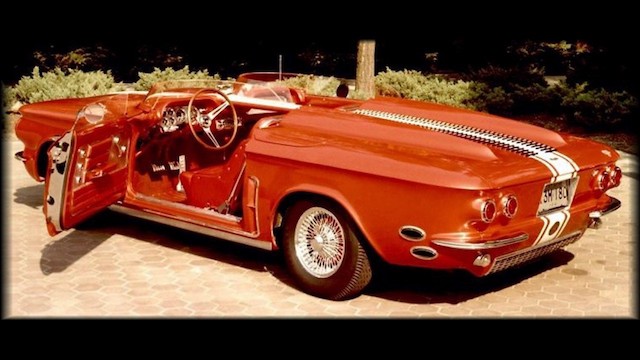 (GM images)
(GM images)
The 1961 Corvair Sebring Spyder.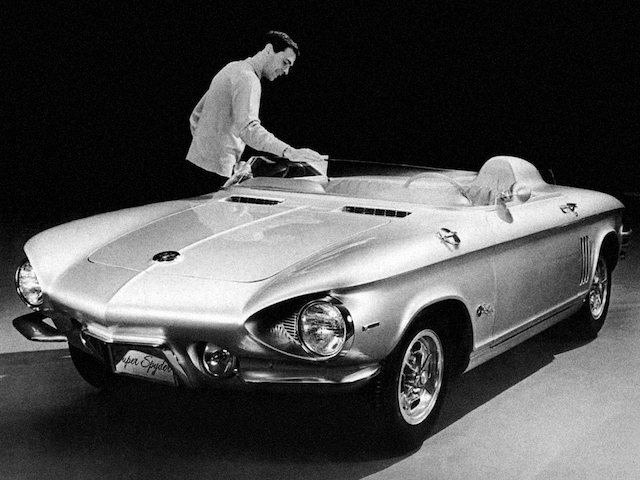 The 1962 Corvair Super Spyder.
The 1962 Corvair Super Spyder.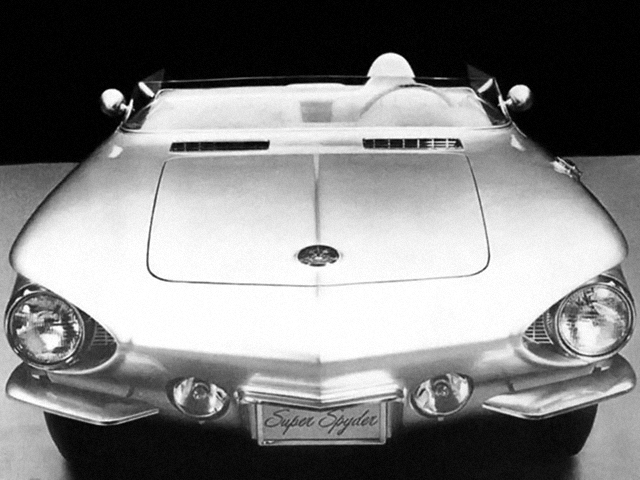 The Super Spyder gleamed in Bill Mitchell's favorite metallic silver.
The Super Spyder gleamed in Bill Mitchell's favorite metallic silver.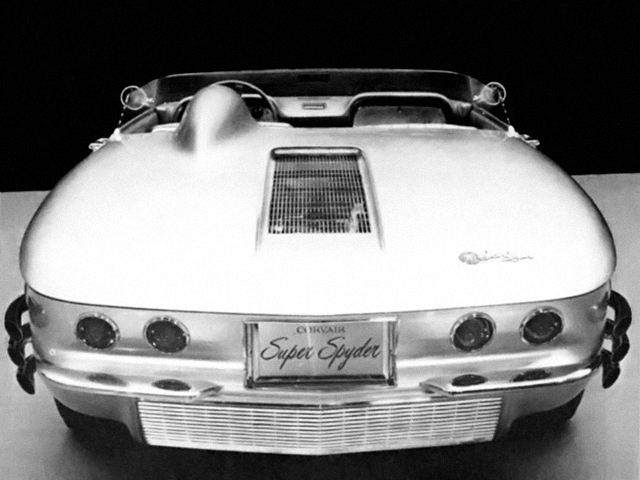 The rear view of the Super Spyder is wild with its triple exhaust pipes and Sting Ray taillights.
The rear view of the Super Spyder is wild with its triple exhaust pipes and Sting Ray taillights.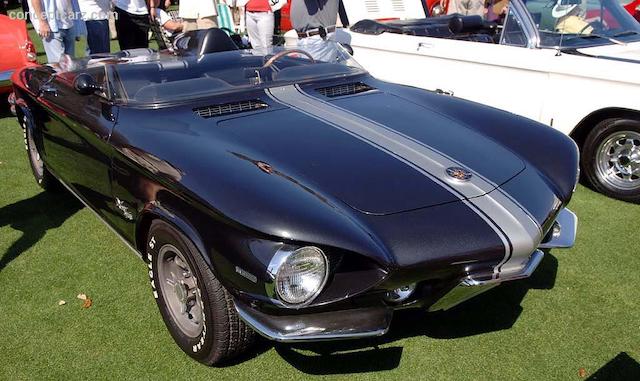 The 1962 Corvair Super Spyder as it appears today.
The 1962 Corvair Super Spyder as it appears today.
I hate the world today
You're so good to me
I know but I can't change
Tried to tell you
But you look at me like maybe
I'm an angel underneath
Innocent and sweet
Yesterday I cried
Must have been relieved to see
The softer side
I can understand how you'd be so confused
I don't envy you
I'm a little bit of everything
All rolled into one
I'm a bitch, I'm a lover
I'm a child, I'm a mother
I'm a sinner, I'm a saint
I do not feel ashamed
I'm your hell, I'm your dream
I'm nothing in between
You know you wouldn't want it any other way
So take me as I am
This may mean
You'll have to be a stronger man
Rest assured that
When I start to make you nervous
And I'm going to extremes
Tomorrow I will change
And today won't mean a thing
I'm a bitch, I'm a lover
I'm a child, I'm a mother
I'm a sinner, I'm a saint
I do not feel ashamed
I'm your hell, I'm your dream
I'm nothing in between
You know you wouldn't want it any other way
Just when you think, you got me figured out
The season's already changing
I think it's cool, you do what you do
And don't try to save me
I'm a bitch, I'm a lover
I'm a child, I'm a mother
I'm a sinner, I'm a saint
I do not feel ashamed
I'm your hell, I'm your dream
I'm nothing in between
You know you wouldn't want it any other way
I'm a bitch, I'm a tease
I'm a goddess on my knees
When you hurt, when you suffer
I'm your angel undercover
I've been numb, I'm revived
Can't say I'm not alive
You know I wouldn't want it any other way
"Bitch" as performed by Meredith Brooks, from "Blurring The Edges" (1997)*. Written by Meredith Anne Brooks and Shelly M. Peiken. Published by Kobalt Music Publishing Ltd.; BMG Rights Management. Lyrics licensed and provided by LyricFind. Watch the video here.






